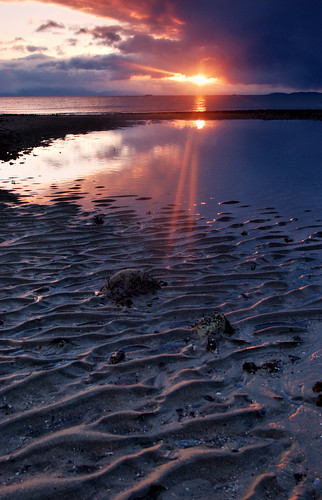Seeing the image within the view
With Nathaniel's permission, I've selected some of his thoughts on the following two images of his, which were originally linked in this thread -
http://www.openphotographyforums.com/forums/showthread.php?p=21261#post21261

In particular, I see the following as 'a plea for help'.
Technically, the images are fine, i.e, colour, contrast, sharpness, etc. but in my opinion there is a need for a more 'correct' composition. Both can be cropped to something that I personally find more pleasing, but of course other opinions are equally valid. For example, I rarely use a wide angle lens for landscapes, but many folk do, to very good effect.
Coincidently, another thread http://www.openphotographyforums.com/forums/showthread.php?t=2376
has a simple chart, which I think can be applied to these images.
Now, we want your views/opinions on this. In landscape, where you are more or less have little control over the environment, do you try and apply compositional rules on site, or do you rely on sorting it out in cropping/pp in general? Have you any advice for Nathaniel wrt his visioning problems (we have mentioned before about L shaped pieces of card, etc.), or do we console him with 'you're doing pretty good to get two good images a year - those two will magically appear, maybe next time'? ;-)
Best wishes,
Ray
With Nathaniel's permission, I've selected some of his thoughts on the following two images of his, which were originally linked in this thread -
http://www.openphotographyforums.com/forums/showthread.php?p=21261#post21261

.... As a photo-tourist, just passing through it is very hard to get to the "right" place when the light is also "right." ......
I was shooting with a Canon 5D with a 24-105 L Zoom for the two shots I linked to my post. On Alan's beach I did not set up the tripod, but I used it on the shot of the fishing jetty. In fact I kind of fell in live with that scene and took a whole series with slightly different crops and compositions. Now that I examine them more closely, I am wondering what intoxicated me so? While standing there, I did not appreciate the clutter and chaos around the buildings. Now I see it as distracting. It so happens there was also a truck in view and the posted image is the only one that did not include it.
I am getting better at my photography, but it is a vey slow process for me.
....
In particular, I see the following as 'a plea for help'.
Now, trying to be helpful, I've looked at these, and other images posted by Nathanial, and I think he well be 'overcome by the beauty of his surroundings'. I think he is trying to capture the whole scene, the sight, the sound the smell, the breeze, as he remembers it, and is possibly not concentrating on what the camera _can_ capture, which is just a 2d representation of that 3d moment.Now that I examine them more closely, I am wondering what intoxicated me so? While standing there, I did not appreciate the clutter and chaos around the buildings. Now I see it as distracting.
Technically, the images are fine, i.e, colour, contrast, sharpness, etc. but in my opinion there is a need for a more 'correct' composition. Both can be cropped to something that I personally find more pleasing, but of course other opinions are equally valid. For example, I rarely use a wide angle lens for landscapes, but many folk do, to very good effect.
Coincidently, another thread http://www.openphotographyforums.com/forums/showthread.php?t=2376
has a simple chart, which I think can be applied to these images.
Now, we want your views/opinions on this. In landscape, where you are more or less have little control over the environment, do you try and apply compositional rules on site, or do you rely on sorting it out in cropping/pp in general? Have you any advice for Nathaniel wrt his visioning problems (we have mentioned before about L shaped pieces of card, etc.), or do we console him with 'you're doing pretty good to get two good images a year - those two will magically appear, maybe next time'? ;-)
Best wishes,
Ray
Last edited by a moderator:

